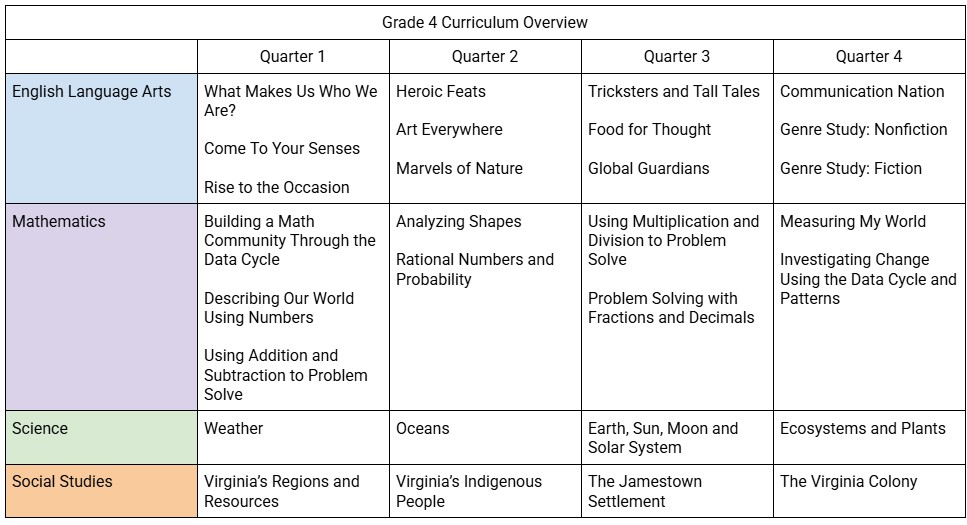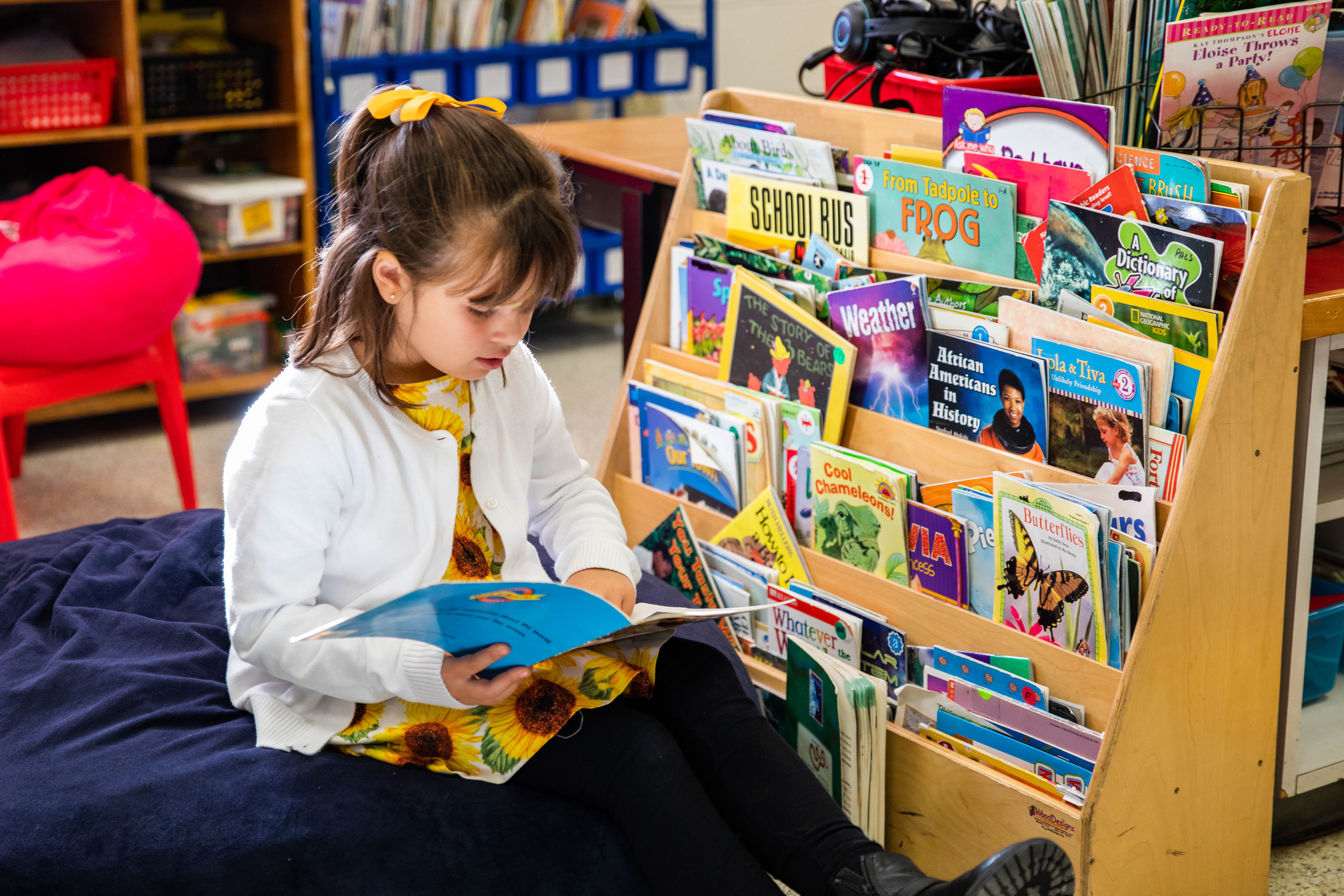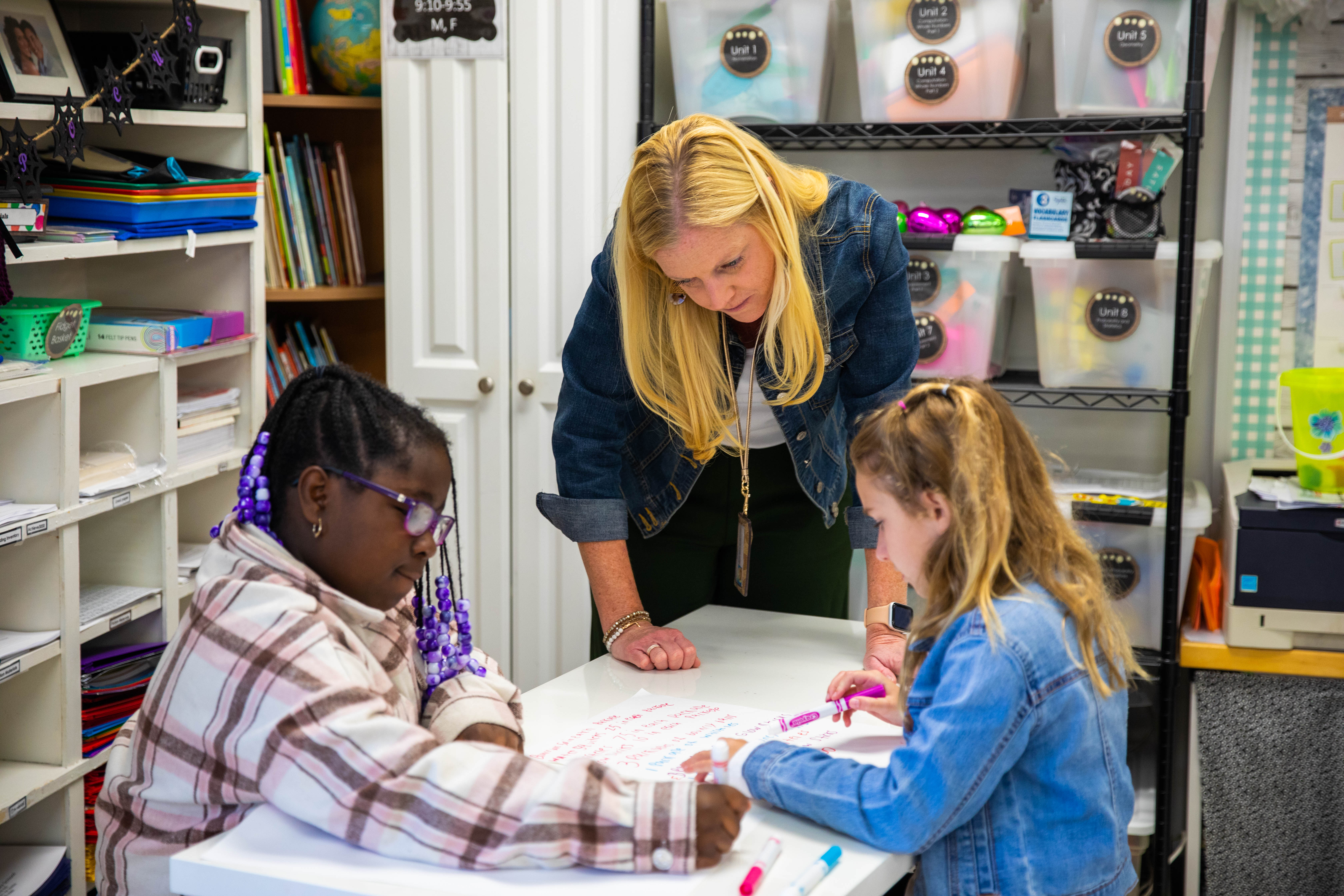
Language Arts
The fourth grade language arts program focuses on the broad areas of communication, reading, writing and research. Students will be introduced to a wide variety of fiction and nonfiction literature which will serve as a basis for instruction and practice in phonics, vocabulary, comprehension, fluency, and writing.
Communication and Multimodal Literacies
- Uses effective oral communication skills
- Creates and delivers multimodal, interactive presentations
- Learns how media messages are constructed and for what purposes
Reading
- Expands vocabulary when reading
- Reads and demonstrates comprehension of fictional texts, literary nonfiction and poetry
- Reads and demonstrates comprehension of nonfiction texts
Writing and Research
- Writes in a variety of forms
- Edits writing for capitalization, spelling punctuation, sentence structure, paragraphing and Standard English
- Demonstrates comprehension of information resources to complete a research product
Click here for a detailed storyboard for Grade 4 English Language Arts
Click here for more information about the Virginia Standards of Learning for Grade 4 Language Arts

Mathematics
The fourth grade mathematics program allows students to examine place value of whole numbers and decimals as they expand their understanding of the Base-10 number system. Students use their knowledge and fluency with basic facts to become more efficient problem solvers. Comparisons between fractions and decimals and an examination of their equivalent forms are explored. Students identify equivalent measurement units within the U.S. customary and estimate as well as measure using various units in both U.S. customary and metric. Opportunities to explore polygons and three-dimensional figures will be provided. Students will analyze categorical data and look at continuous sets of data and represent them graphically. Students represent the probability of simple events as a value and predict the likelihood of an event occurring. Students will further their understanding of algebraic properties of equality with numbers and deepen their understanding of repeating and growing patterns.
Numeration and Computation
- Understand the ways of representing whole numbers and rational numbers and the relationships that exist among these numbers and number systems
- Understand the meanings of addition, subtraction, multiplication, and division and compute using whole numbers and rational numbers
Geometry and Measurement
- Understand measurable attributes of objects and events, units of measure, and systems of measurement and apply appropriate techniques and tools to determine measurements
- Analyze characteristics and properties of plane (two-dimensional) and solid (three-dimensional) geometric shapes
Probability and Statistics
- Create questions and construct answers by collecting, organizing, and displaying data
- Understand and apply basic concepts of probability
Patterns, Functions, and Algebra
- Understand a variety of patterns
- Represent and analyze mathematical situations and structures using algebraic symbols
Click here for a detailed storyboard for Grade 4 Mathematics
Click here for more information about the Virginia Standards of Learning for Grade 4 Mathematics

Science
In fourth grade, students continue to develop their understanding of the scientific and engineering practices as they learn science content. Students will use the inquiry process as they continue to explore the world and begin to understand their place in the solar system.
Living Systems and Processes
- Understand that plants and animals have structures to obtain energy and produce offspring, which distinguish them from one another and are used to classify them for identification
- Understand the interrelationships between populations, communities, ecosystems and how the flow of energy moves within an ecosystem
Earth and Space Systems
- Understand weather conditions and phenomena affect ecosystems and can be predicted
- Understand the organization of the solar system and the relationship among Earth, the Moon, and the Sun
- Understand the distinct characteristics of the planets and how they move in the solar system
- Understand the characteristics of the ocean environment and how plants, animals, and nonliving components interact in the ocean
Earth Resources
- Understand important natural resources in Virginia, to include watersheds and water, minerals and ores, plants, animals and soil
Click here for a detailed storyboard for Grade 4 Science
Click here for more information about the Virginia Standards of Learning for Grade 4 Science
Social Studies
In fourth grade, the social studies program focuses on the study of Virginia history. Students will use the process of inquiry to investigate the physical geography of Virginia and the history of Virginia including the life and cultures of Virginia’s indigenous people, the early English settlements, and the growing Virginia colony in the years leading to the American Revolution.
The students will demonstrate knowledge and understanding of:
- How the physical landscape shapes human interactions in Virginia
- Life of Virginia's Indigenous people
- Life in the Jamestown colony
- Life in colonial Virginia
Click here for a detailed storyboard for Grade 4 Social Studies
Click here for more information about the Virginia Standards of Learning for Grade 4 Social Studies
